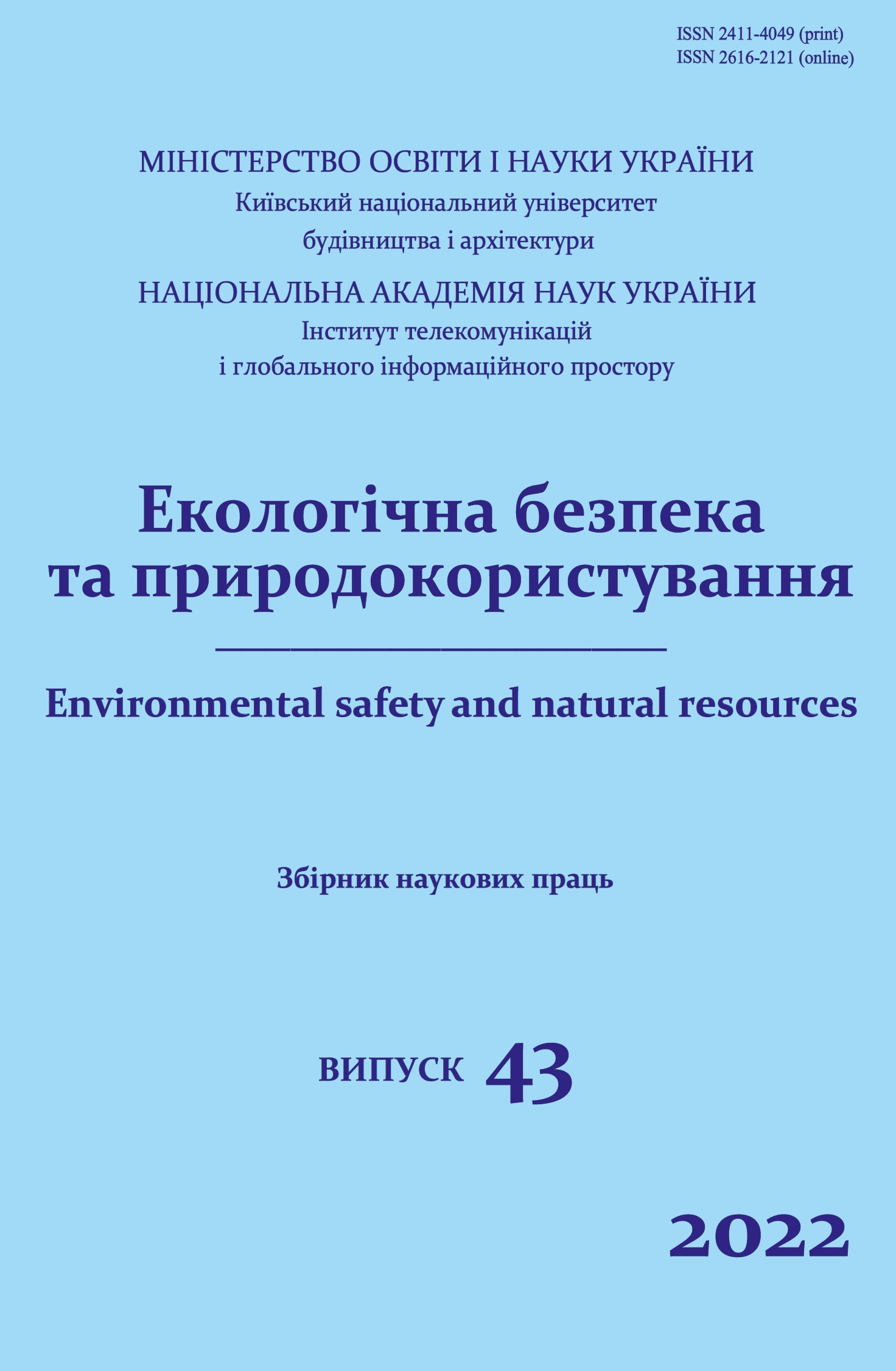Monitoring of Dniester watershed pollution by reason of flooding and other environmental disasters
DOI:
https://doi.org/10.32347/2411-4049.2022.3.35-42Keywords:
environmental safety of the territory, cartographic-graphic model, man-made load, remote methods, contact methodsAbstract
The work is about the solution of the scientific and practical task of substantiating the construction of geomodels of zones of probable flooding of the Dniester River on the basis of aerospace and contact measurements. In order to localize flooded areas and predict the dynamics of changes in geometric characteristics, natural and man-made factors that cause the rise of the groundwater level were analyzed. The main types of activity and load on the water resources of the Dniester basin are: residential and communal economy, industry, agriculture, including fisheries, hydropower and flood protection. Among the main cross-border problems typical for the Dniester River are: pollution by organic, biogenic and dangerous substances; hydromorphological changes; pollution by plastic and other household waste of the coastal strip of the river; spread of invasive species. The transboundary Dniester river is used for electricity generation. Dubossar hydroelectric power plant (HPP) (1954) in Moldova and Dnistrovsk HPP (1987) and Dnistrovsk HPP-2 (2000) in Ukraine were built on the river. Their activities led to hydromorphological changes of the river and its regulation.
The main role in the pollution of the waters of the Dniester basin by biogenic substances on the territory of Ukraine and Moldova belongs to diffuse sources of agricultural origin. Water management activities and intensive chemicalization of agricultural land significantly affect the water quality of the Dniester River. The possibility of using available satellite images makes it possible to reduce the time and material costs of conducting additional contact measurements when determining zones of probable flooding, without reducing the accuracy of forecast parameters. The developed cartographic geomodels of areas of probable flooding make it possible to determine and visually assess the degree of flooding under different modes of operation of pressure horizons that have a hydraulic connection with groundwater.
References
Trysnyuk, V., Trysnyuk, T., Okhariev, V., Shumeiko, V., & Nikitin, A. (2018). Cartographic Models of Dniester River Basin Probable Flooding. Сentrul Universitar Nord Din Bala Mare, 1, 61-67.
Trofymchuk, O., Kalyukh, Y., & Hlebchuk, H. (2013). Mathematical and GIS-modeling of landslides in Kharkiv region of Ukraine. In Landslide Science and Practice: Spatial Analysis and Modelling (pp. 347-352). Springer, Berlin, Heidelberg.
Adamenko, O.M., Adamenko, Ya.O., Arkhipova, L.M. et al. (2014). Ecological safety of territories. Ivano-Frankivsk: Suprun [in Ukrainian].
Trуsnyuk, V.M. (2016). Environmental safety management system of natural and anthropogenically modified geosystems. Information processing systems, 12, 185-188 [in Ukrainian].
Trysnyuk, V.M., Okhariev, V.O., Trysnyuk, T.V., Zorina, O.V., Kurylo, A.V., Golovan, Y.V., Smetanin, K.V., & Radlowska, K.O. (2019). Improving the algorithm of satellite images landscape interpretation. In 18th International Conference Geoinformatics – Theoretical and Applied Aspects, Extended Abstracts.
Downloads
Published
How to Cite
Issue
Section
License
Copyright (c) 2022 Mandryk O.M., Okhariev V.O., Trysnyuk T.V., Mykhailyuk R.Y.

This work is licensed under a Creative Commons Attribution 4.0 International License.
The journal «Environmental safety and natural resources» works under Creative Commons Attribution 4.0 International (CC BY 4.0).
The licensing policy is compatible with the overwhelming majority of open access and archiving policies.

